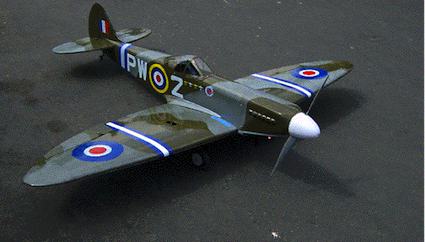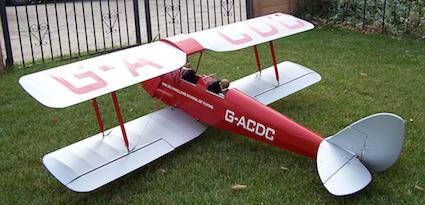 |
Flying High With Electric Power!
The Ampeer ON-LINE!
Fly the Future - Fly Electric! |
Site Table of Contents
| President: | Vice-President: | Secretary/Treasurer: |
| Ken Myers | Richard Utkan | Rick Sawicki |
| 1911 Bradshaw Ct. | 240 Cabinet | 5089 Ledgewood Ct. W. |
| Commerce Twp., MI 48390 | Milford, MI 48381 | Commerce Twp., MI 48382 |
| (248) 669-8124 | (248) 685-1705 | 248.685.7056 |
 | ||
| Board of Directors: | Board of Directors: | Ampeer Editor |
| David Stacer | Arthur Deane | Ken Myers |
| 16575 Brookland Blvd. | 21690 Bedford Dr. | 1911 Bradshaw Ct. |
| Northville, MI 48167 | Northville, MI 48167 | Commerce Twp., MI 48390 |
| 248.924.2324 | 248.348.2058 | 248.669.8124 |
| Mailed Ampeer printed subscriptions are no longer available.
The Ampeer is FREE on-line in Acrobat .pdf format and HTML with active links! | ||
| The Next Meeting:
Date: Saturday, April 7 Time: 10 a.m. (tentative) Place: First Flying Meeting of the year, Midwest RC Society 7 Mile Rd. Flying Field | ||
| What's In This Issue? | |
| Keith Shaw Birthday Party Electric Fly-in 2012, upcoming meet announcement. | Power System for a World Models Giant Scale (GS) Spitfire, recommended power system |
| The February EFO Meeting, Richard Utkan shares his FuglyJet and foamboard construction, Denny Sumner shared his gorgeous Pou-du-Ciel, everyone helps Bill Brown with questions he had in planning his Wright Model B, the problems associated with "under-pitching props" and much more. | A Tiger Moth, Ross Taylor shares details on his 20-cell (NiMH) 1//5-scale Tiger Moth. |
| Returning to E-flying in Australia, Robert Comerford explains why he's once again excited about e-flight. | Upcoming Mid-Am, flyer, map and hotels list for the 2012 Mid-America Electric Flies. |
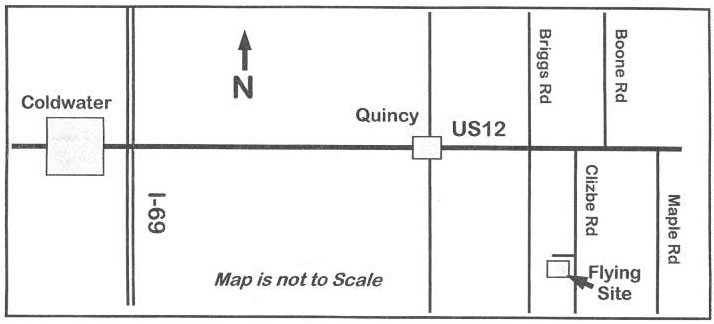
|
The Balsa Butchers will once again be hosting the "Keith Shaw Birthday Party Electric Fly-In" at their field near Coldwater, MI. The event will take place on June 2 and 3, 2012. Contest Director: Dave Grife - E-mail: grifesd@yahoo.com or Phone: 517.279.8445
The Flying Field will be open Friday, June 1 for early arrivals
Power System for a World Models Giant Scale (GS) Spitfire
Howdy, First a little background and a question or two. I'm currently building a World Models Giant Scale (GS) Spitfire.
My previous one was gas powered and this one is going to be electric.
Electric: www.airborne-models.com/Econvert/spitfire/spitfire.asp
The plane should come in around 14 lb. I bought a Castle Creations Ice Hv 80 speed controller and a Turnigy G160 Brushless Outrunner 290Kv (6364-290, 632g). I'm only interested in scale flying not hovering. It is the battery requirement where I'm stuck. On YouTube I found a video of an AT-6 at 14 lb. on 6 cells, that with the right prop, flew very well.
And a follow-up email with answers to my questions: The gasoline powered model was powered by a Ryobi 31cc. I believe I was flying an APC 17x6 prop. It was probably not the right prop, but it flew ok and takeoffs and landings were sweet. Search for k4lll on youtube for videos of the spitfire.
Here is a link to the AT-6 on a 6-cell 5000mAh, 20x15 prop.
Ken's Notes and Thoughts: Data posted with the Video:
Ken's NOTES ON THE ABOVE DATA: The motor is NOT "putting out just under 1000 watts". The power system is taking IN 978 watts. If the power system is 80% efficient, then it is putting OUT about 782 watts. Watts in per pound = 978 watts in / 14 lb. = 69.86 watts in per lb.
|
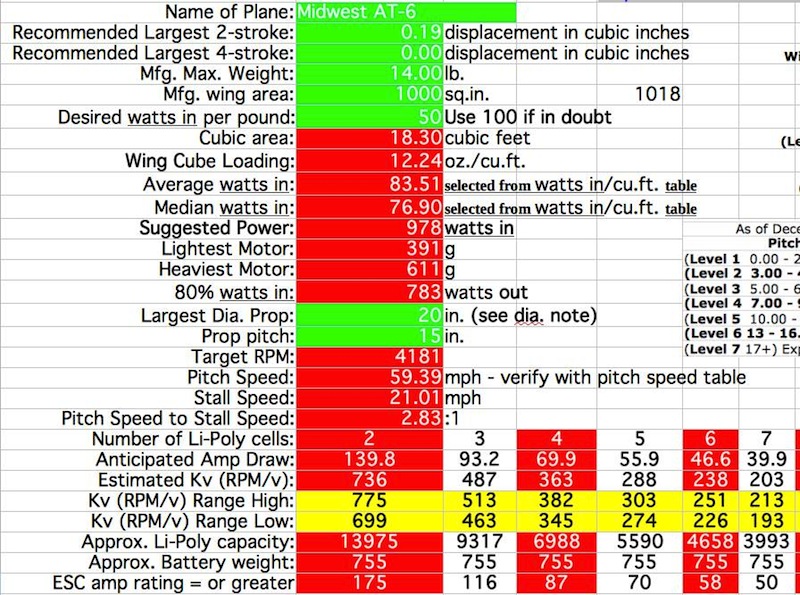
|
The engine displacement inputs were adjusted to reflect the reported 978 watts in in the Suggested Power: cell. The performance section of the worksheet shows that the plane is "okay", but not stellar.
|
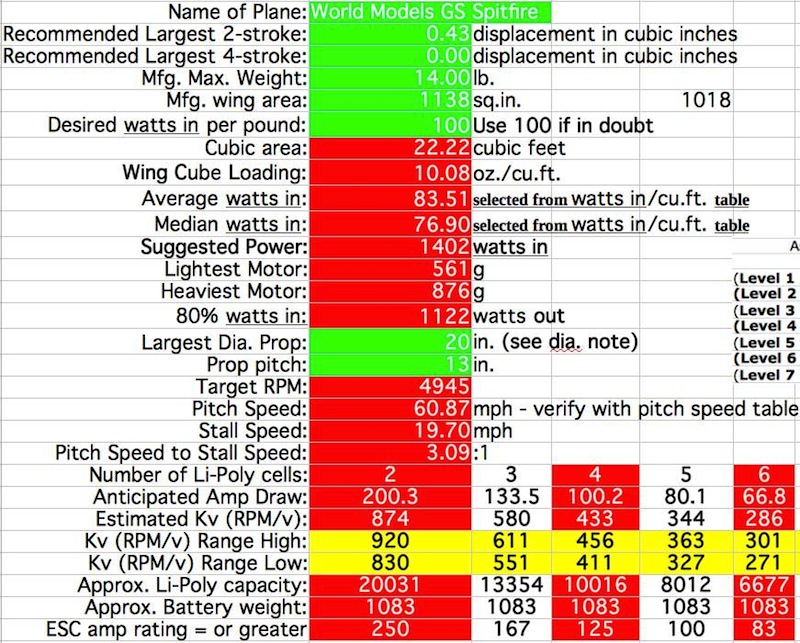
|
Using the Excel worksheet, shown above, the engine displacement inputs were adjusted to reflect about 1400 watts in in the Suggested Power: cell. The 1400 watts in is used to provide 100 watts in per pound for the anticipated 14 lb. Spitfire.
Solution 1:
The flight time could be increased by using parallel battery packs.
After completing the calculations for the 290Kv motor, I received the following email from Scott.
|
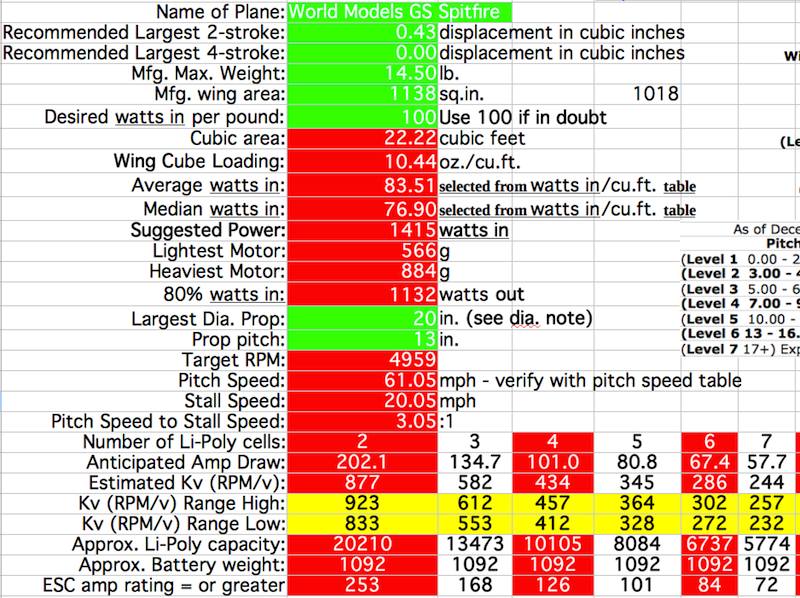
|
The performance using 7 cells and the same 20x13 prop, especially the stall speed to pitch speed ratio, is better than the AT-6 and about the same as the 290Kv motor. A pitch speed to stall speed ratio greater than 3:1 is really better for this type of plane. Using 7 cells in series, the amp draw should be in the high 50's (Anticipated Amp Draw: 57.7). The suggested pack capacity, Approx. Li-Poly capacity: 5774mAh, is close enough to 5500mAh that decent flight time may be achieved with no paralleling necessary. A 3S 5500mAh and 4S 5500mAh can be connected in series to create a 7S pack.
The February EFO Meeting The February EFO was held at Ken's house. 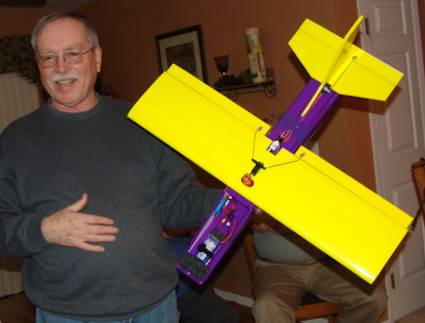 Richard Utkan, EFO vice-president, lead off the meeting with his two-day project, a FuglyJet. It is an EDF design constructed from Dollar Tree foamboard and colored packing tape.
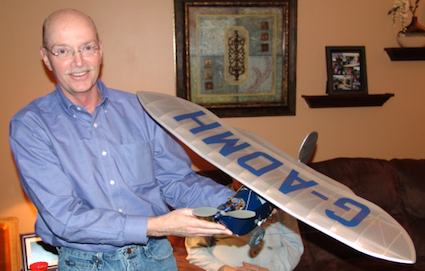 Denny Sumner shared his gorgeous Pou-du-Ciel. It was built from Traplet plans.
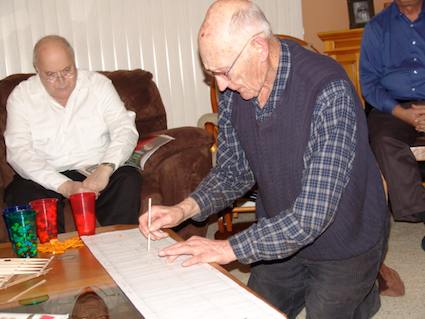 Bill Brown is building a Wright Model B from plans that Jim Young drew up for him. He rolled out the plans and explained a problem he was having on strut attachment.  Soon, everyone was involved in trying to give useful suggestions to Bill.
"In order to just do a nice inside loop, the plane must enter at TWICE the stall speed. To do clean inside loops, rolls, and other sport-type aerobatics, THREE TIMES stall speed is needed. Anything over 4 TIMES the stall speed gives "fighter-type" performance and extended vertical aerobatics." "Ken also presented what he thought was a reasonable power system for the plane using the same 2100 watts in. He suggested a 11S1P 5500mAh Li-Poly and a motor weighing between 840g and 1313g with a Kv between 160 and 180 turing an APC 20x15E. It would give a pitch speed of about 75 mph and a pitch speed to stall speed ratio of over 4:1. The example motor he used was a Turnigy Aerodrive SK3 - 6374-168kv Brushless Outrunner with a weight of 840g.
A Tiger Moth
Good afternoon Ken, I just settled down in front of the computer after a happy hour of removing about 4" of wet snow from my driveway. Lo and behold, the December issue of the AmPeer was posted. It was just what I needed to take away the "I'm feeling sorry for myself, there's no flying until spring" attitude.
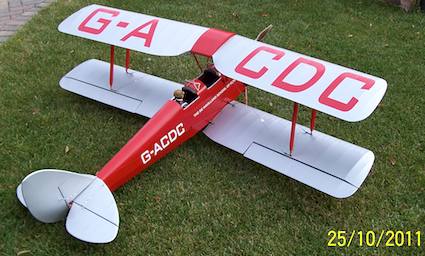 Cheers, and with best regards,
Returning to E-flying in Australia
Hi Ken, Just a further update on my return to electric flight.
Regards
The Upcoming Mid-Am, July 7 & 8, 2012 |
To Reach Ken Myers, you can land mail to the address at the top of the page. My E-mail
address is:
kmyersefo@theampeer.org
EFO WEB site: http://www.theampeer.org
